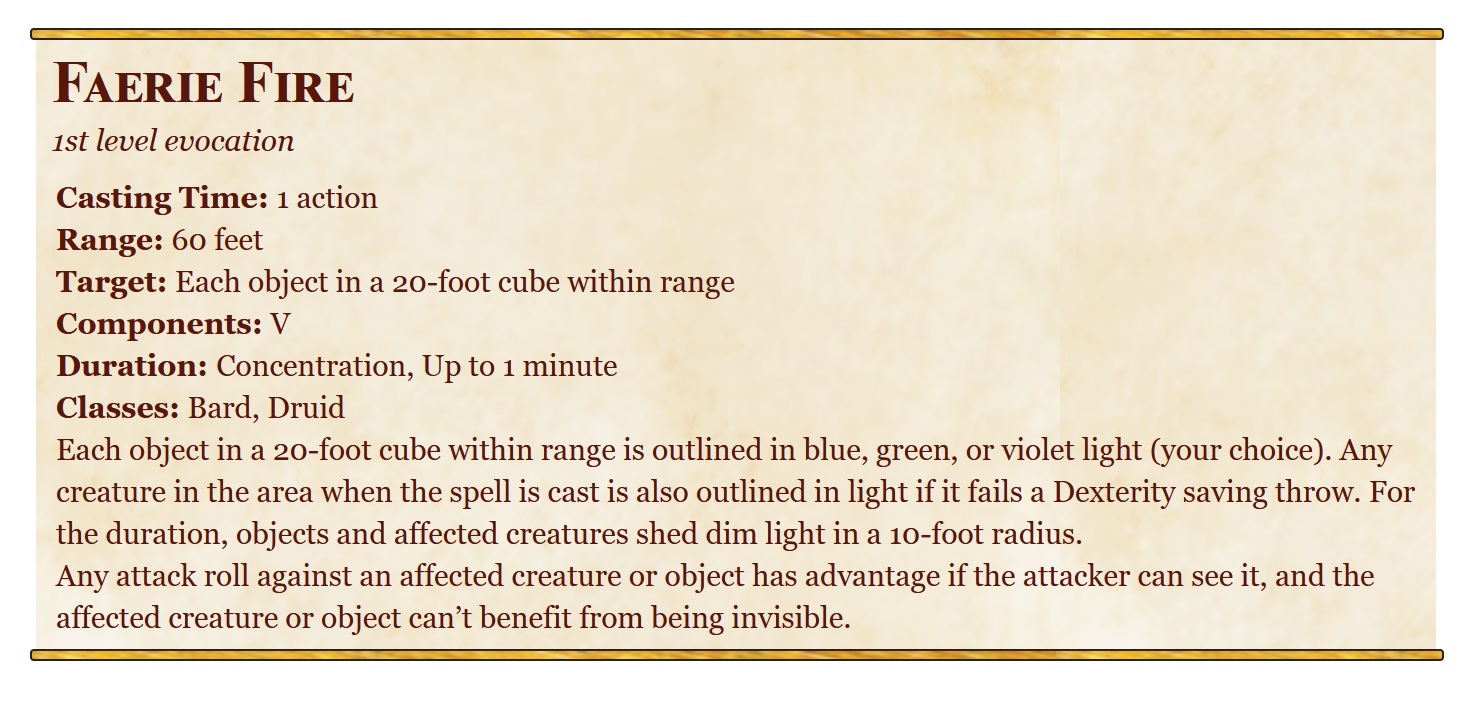D&D: Invisibility Doesn’t Work The Way You Think It Does


Invisibility is a powerful combat advantage. But it doesn’t work the way you think it does. Let’s unravel invisibility in 5th Edition.
Invisibility and fantasy adventures go hand-in-hand. Whether you’re an Arthurian Knight who takes being a random jerk to whole new levels, an eleven-year-old boy wearing a piece of the Grim Reaper’s cloak, or a Hobbit using the most powerful magic item in the world to get away from everyone on his birthday, invisibility is a staple of fantasy adventures.

Invisibility is also just a whole mood.
Little wonder then that invisibility is a big part of Dungeons & Dragons. Wizards can vanish from sight with a spell. Gloomstalker Rangers disappear into shadows, becoming one with the night. Even Arcane Tricksters can obfuscate themselves. Add in a Ring of Invisibility and there’s no end to the ways that a creature might turn themselves invisible in D&D.
And being invisible is a great benefit. It lets you sneak around unseen! You can go anywhere and nobody will know you’re there. Well. Sort of. Let’s take a look at what invisibility actually does in 5th Edition.
How It Works
Here’s the condition, as outlined in the Basic Rules/Player’s Handbook:
Invisibility
-
- An invisible creature is impossible to see without the aid of magic or a special sense. For the purpose of hiding, the creature is heavily obscured. The creature’s location can be detected by any noise it makes or any tracks it leaves.
- Attack rolls against the creature have disadvantage, and the creature’s attack rolls have advantage.
The fact that being Invisible has two bullet points will be extra important in just a minute. But for now let’s take a look at the first one. You become impossible to see–but not impossible to detect. The noise you make and tracks you leave still give away your location. Meaning that without a silence spell, if you cast invisibility on yourself in combat, everyone still knows exactly where you are and can attack you.
Of course, thanks to the second bullet point, anyone attacking you has disadvantage. But that means you can still be easily included in an area of effect, or the monk can rush across the room to try and stunning fist you.
The other thing worth mentioning is that you are heavily obscured for the purpose of hiding. That’s a mechanical way of representing the fact that you can’t be seen. And more importantly, it means you can hide without having to obscure your position from someone. Normally if you want to hide in combat you have to get out of sight of the creature you’re hiding from. You can’t just be in a corridor and shout stealth check! at your DM. Unless you’re invisible, that is.
This goes for enemies too. If a spellcaster vanishes right in front of you with invisibility? You still know exactly where they are until they make that hide check. Noise, footprints, and the like give them away.
But what if you want to counter that advantage? That’s when invisibility gets real weird. Or as I like to put it:
What do you mean I still have disadvantage? I cast See Invisibility?
Because invisibility isn’t just about not being seen. It’s also about getting advantage and giving your enemies disadvantage on attack rolls in combat. For normal invisibility, it’s most often about the defensive uses of it. It all comes down to that second bullet point. In a big Sage Advice Live panel last year, D&D’s lead rules designer, Jeremy Crawford broke it down:
In a nutshell, even being able to see an invisible creature with magic doesn’t negate the second bullet point. You need a spell like Faerie Fire which specifically says it negates the benefit of being invisible:
Faerie Fire is one of the only spells that does this. See Invisibility doesn’t. Even True Seeing, the most powerful Illusion piercing spell in the game, doesn’t do this. Same goes for creatures and characters that naturally have Blindsight. This leads to the odd occasion of fighting a Gelatinous Cube (which has blindsight) and it still having disadvantage to attack the invisible character, but not the non-invisible person trying to hide next to them.
So to sum up? If you’re invisible you can run and you can hide, but unless you do, everyone knows where you are. But even if they can see you, they still can’t hit you.
Happy Adventuring









